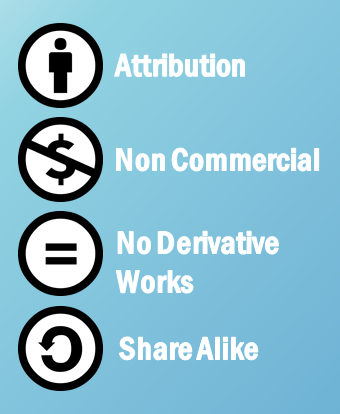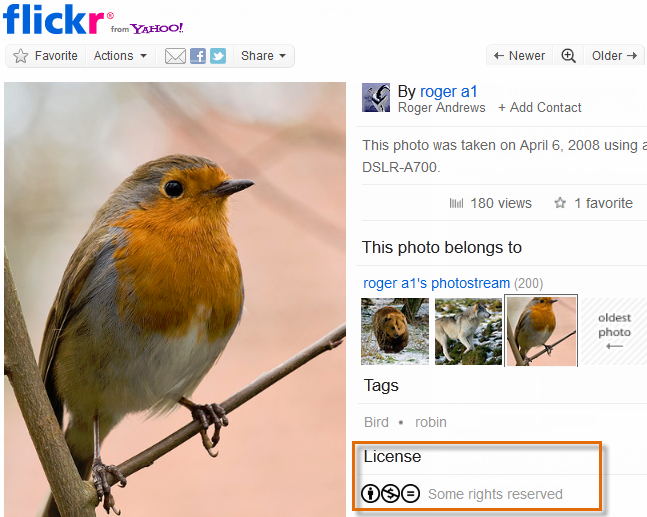Blog Basics
Copyright and Fair Use
Using Public Domain and Creative Commons content
If you don't want to spend money on the images and content you use for your blog, you may want to use Public Domain and Creative Commons-licensed content.
Using Public Domain content
There are no restrictions on using works that are in the Public Domain, which means you can use them however you want—short of claiming you created them. Unfortunately, it's not always easy to tell whether or not something is in the Public Domain. There may be some cases when you know for sure that a work is Public Domain—for instance, if you find a photo or text that you know was published before 1923—but for the most part, the best way to find Public Domain content is to search for it.
Sites for finding Public Domain content:
Using Creative Commons content
 The symbols for each Creative Commons license
The symbols for each Creative Commons licenseAlthough Creative Commons content won't cost you any money to use, it's not totally free; to use it, you must follow certain rules. People who choose to make their content Creative Commons can choose one or more of these licenses to apply to their work:
- Attribution: You must credit the creator in order to use, copy, or share the content.
- Non Commercial: You can't make a profit from the content.
- No Derivative Works: You can't change the content.
- Share Alike: You can change the content, but you have to let other people use your new work with the same license as the original. In other words, you can't treat any Share Alike work you adapt as your own copyright, even if you radically change it.
How to tell if content is Creative Commons
To tell if a piece of content is Creative Commons, look for the Creative Commons symbol  , as well as symbols that indicate exactly which licenses apply to it. For instance, the symbols in the example below indicate that the photo has three licenses: Attribution, Non Commercial, and No Derivative Works. This means you can use this photo if you credit the person who created it, don't make money from it, and don't change it.
, as well as symbols that indicate exactly which licenses apply to it. For instance, the symbols in the example below indicate that the photo has three licenses: Attribution, Non Commercial, and No Derivative Works. This means you can use this photo if you credit the person who created it, don't make money from it, and don't change it.
 Creative Commons license information for a photo
Creative Commons license information for a photo





